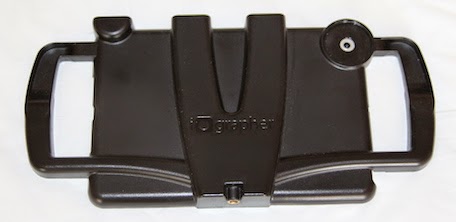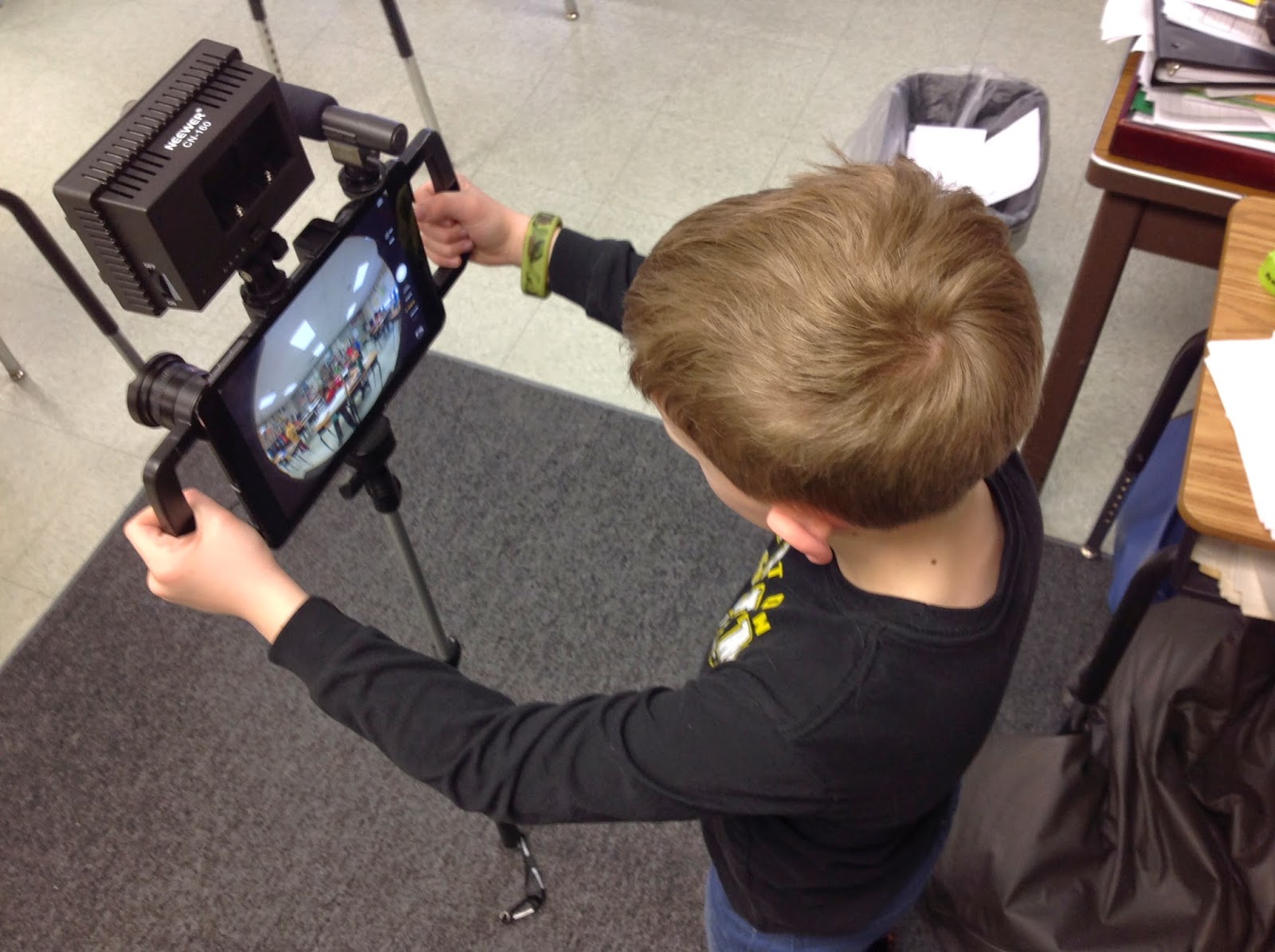This week I asked my students their impressions on using one of my movement based activities in the classroom as self -regulation and movement based activities are part of my three year goal for my district. They reflected on using the classroom spin bike, the bouncy bands that each student has on their desks, and the "Move Around Math" scavenger hunts that I have been creating.
 Move Around Math Reflections
Move Around Math ReflectionsI have created many "Move around Math" scavenger hunts to get kids up and moving while doing math. You can view all of them here.
Previous posts:
How to get your students moving during math class: Host a classroom Scavenger Hunt
Here are some responses:
"Move Around Math" helped me during math by letting me move around and not just being cooped up at my desk doing a work sheet. It's a lot more fun too! I also get to walk around the room and it's an extra challenge trying to find them. KO
"I like "Move around Math" a lot because.I thought that math was not fun but when Mr..Hansen showed us "Move around Math" I thought it was so much fun. There are three things you are doing when you do "Move around Math". You are getting excercise, having fun, and doing math. EL
The scavenger hunts are my favorite because when we do them I get the chance to move around to find and do math problems. It is also fun at the end when I can figure out the joke or riddle. When we do the scavenger hunt it helps me solve the problems by moving around to do them. That is why I like the scavenger hunts DA
I like when my class does scavenger hunts because when I work I like to move around to concentrate on my math, science, and social studies because I work a lot harder. NS
I love "Move around Math" because I never could remember how to solve a simple math problem, but when I got up and moved my legs I just remembor things that I learned in 3rd and 4th grade. RW
The "Move Around Math" scavenger hunts helped me in class because when I am sitting at my desk I cannot think well but when we get up and move around the classroom it gives me exercises and math becomes easy. Also moving around the classroom is much more fun than sitting at our desks and doing worksheets. CT
Scavenger Hunts help me because I get to move around. They are a lot of fun. JB
Facilitating Focus and Reducing Stress Through Bouncy Bands
"I like "Move around Math" a lot because.I thought that math was not fun but when Mr..Hansen showed us "Move around Math" I thought it was so much fun. There are three things you are doing when you do "Move around Math". You are getting excercise, having fun, and doing math. EL
"Move Around Math"scavenger hunts helped me during math class Because it helped me to understand multiplying and adding and subtracting fractions.It also made me active and helped me pay attention more in math. Even I thought math was just doing tests and doing worksheets, but when Mr.Hansen showed us "Move Around Math" it was so much fun JJ
I like when my class does scavenger hunts because when I work I like to move around to concentrate on my math, science, and social studies because I work a lot harder. NS
I liked the "MAM" ("Move around Math) because instead of sitting down and doing a worksheet, we get to get up and move around. This is good because it is good exercis, and it is more fun. Plus there's a joke/riddle to solve once you complete all the problems. It also helps me focus more. That's why I like "MAM". LS
I love "Move around Math" because I never could remember how to solve a simple math problem, but when I got up and moved my legs I just remembor things that I learned in 3rd and 4th grade. RW
The "Move Around Math" scavenger hunts helped me in class because when I am sitting at my desk I cannot think well but when we get up and move around the classroom it gives me exercises and math becomes easy. Also moving around the classroom is much more fun than sitting at our desks and doing worksheets. CT
Scavenger Hunts help me because I get to move around. They are a lot of fun. JB
“The spin bike has helped me by moving my legs to get anger out or stress. Also it has helped me by paying attention in class when there is a test. It has helped by calming down when I am high or when I do something that I shouldn't have...That is how the spin bike helps me.” LN (not sure about the “high” comment)
“I have math anxiety so when we take a test I usually get very nervous. When I am stuck on a problem in a math test and am very frustrated or nervous I go on the spin bike. This helps me calm down. Sometimes I pedal fast which gets the frustration out of me. Other times I pedal slow and think about other things besides math. Both of these help me very much. I ride the bike for 5 minutes only and then go back to my math test. After my rides on the bike I feel more focused and ready to attempt the hard math problem.” CB
“When I have used the spin bike, I've noticed some improvement in my ability in math. I've noticed when I've had a math test or quiz, I would struggle sometimes. Then, when it's my turn to use the bike, I go on the bike and start riding while I'm doing the test. When I don't use the bike and I take a test, I usually get a P. But, when I do use the spin bike, I usually get Ms. I've also noticed improvement in math because of the bouncy bands. When I don't use the bouncy band, I usually get stressed out and I don't do so well. When I do use the bouncy band, I don't get stressed out and I do well in math. The bouncy bands and the spin bike really helps me out in math class and I always get good grades because of it. The movement helps!” JT (P= progressing towards standard. M=meets the standard)
“I have realized that when we are doing math and I’m frustrated the bouncy bands make me calm. Also I have realized when I go on the Spin Bike and we are doing math it makes me more confident. And last of all when I do "Move Around Math" it helps you do better in math.” AC
Bouncy Band Reflections
previous post:
“The thing that helps me the most are the bouncy bands. During a lesson when I put my shoes on the bouncy band they help me because, I feel like I focus more when I bounce. Also I tend to get nervous when we do math. Like, I feel like I'm going to fail and have to stay back a grade. But the bouncy bands help me and my anxiety calm down.” LP
“The bouncy bands helped me during math because when my legs move around it gets me active and ready to learn and if I go into another classroom that doesn't have bouncy bands then i don't focus as much.” LM
“The bouncy band really help me because when I’m trying to learn I have to move a lot to be able to listen and when I use the bouncy band i find it so much easier to listen and way more fun. Another reason is because during math I don't really like to have a lot of papers and numbers in math but my mood for math changes when I use the bouncy bands.” JL
“The bouncy bands help me so much when I’m going a hard math problem. I get all nervous and shaky. Then I remember that I can just put my feet on the bouncy band and there off and moving. I calm down a lot. I also use it for math tests. I love them they work so well and other kids will love them to. I use them all most the whole day! Mostly math class. Even though math is one of my best subjects. (I think.) With the bouncy band my grades went up. I just love it so much.” AC
“The bouncy bands help me during math by giving me a chance to move my feet (also not to tap on the ground, 'cause sometimes I "stomp" on the bouncy bands). It also gives me a place to rest my feet when I'm too tired to bounce around.” JT
“The bouncy bands are a great stress reliever when you have too much energy. It is great for tests.” JM
“Not Just a Foot Rest-Bouncy bands are a great way to get your feet moving during a math lesson! Scientists say "kids who are moving during a lessons, studying, or a test will do better". Last year I did and experiment on memory before and after exercising. If you’re moving during a lesson you will remember more. “HR
“The bouncy bands helped me because when I am nervous that I will get a math problem wrong I start putting my feet on the bouncy band and then I start to focus and get the math correct. “ LC
“The bouncy bands help me during math class by helping me when I'm stressed out. When I'm stuck on a math problem moving my legs helps me not get stressed. Also the bouncy bands help me think better, they help me focus on the things I have to get done.” VM
.




























